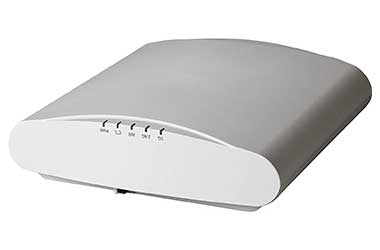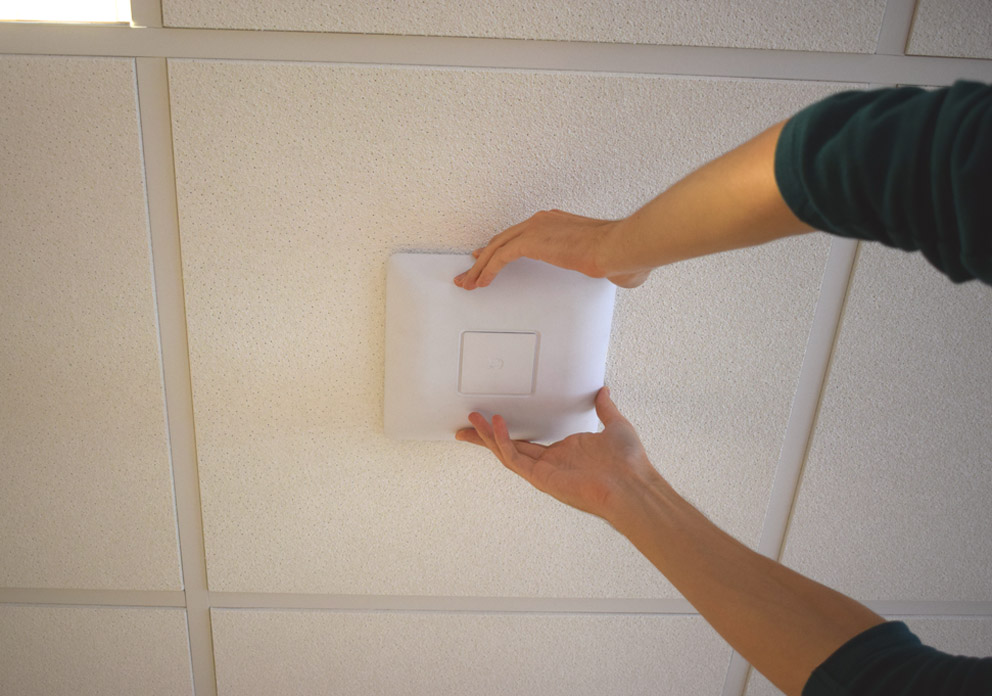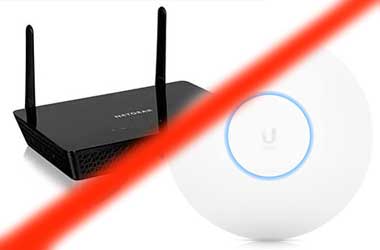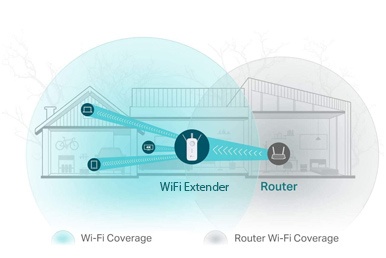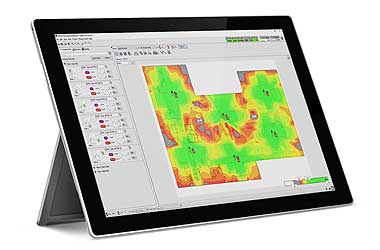
A WiFi site survey is a process of measuring, planning, and designing a wireless network. In addition, the site survey helps to provide a solution to coverage requirements, capacity needs, roaming, and QoS. A new network design warrants a WiFi site survey. Existing networks in need of repair or upgrade also need a survey. There are many different types of WiFi site surveys. But the most common and accurate are ones that include a site visit and on-site measurement collection. The wireless site survey generates a report upon completion. The report contains recommendations for AP placement. As well as quantities based on your current or preferred AP model. The report takes into account your expectations of wireless network usage to future-proof your design.
Why Do I Need A WiFi Site Survey
If you’re reading this article you’re probably thinking about getting a WiFi site survey. Maybe you’re wondering how to conduct a WiFi survey or if it makes sense to do so. In most cases, the answer is a resounding “yes”. Here are a few situations where a site survey is crucial:
Building out a new network
A dream scenario for an IT manager is the chance to build a new wireless network. Without proper planning though, a project like this could turn into a real nightmare. A WiFi site survey can alleviate these planning failures. It takes into consideration your usage expectations, site limitations, and equipment preferences to plan a network. Afterwards, the report generated from the site survey will provide a step-by-step guide to any installation team on what to do. It includes where to run cable, how to mount access points, and in what way to configure the network. The report will also include a level of efforts section. This section will detail all our installation and hardware requirements allowing you to create a solid plan of action.
Fixing issues with an existing network
A WiFi network that doesn’t work properly will put a halt to any business’s day-to-day operations. There are numerous things that can cause a network to underperform. Including too little or too many access points, improper AP placement, thoughtless power, channel settings, and outside interference. In some cases, a WiFi network works great but as your business grows, the WiFi performance worsens. As your network demands change, the current network just doesn’t meet the expectations anymore. A WiFi site survey will address all these issues and provide you with a game plan to either fix your WiFi issues or maximize the existing performance of your current network.
Tweaking your network to adjust to specific performance
Perhaps you changed the layout of your office for whatever reason. In another case, maybe new neighbors moved in with a strong wireless footprint that seems to bleed into your office space. Conversely perhaps your employees are suddenly taking part in more video conferencing calls and experience lag and dropped connections. Any of these examples and more can cause a normally functioning WiFi network to suddenly not work properly. A WiFi site survey can help by creating a report with recommendations to adjust your network to work the way you want it to.
Expansion of an existing network
Growth often presents new problems, albeit usually good ones. WiFi networks expanded to support additional rooms, floors, or buildings, would benefit from a WiFi site survey. This is important if the expanded network is close enough to the current network that the WiFi signal is continuous or overlaps. Expanding an existing network will always warrant a site survey. This is done to make sure all the access points on your WiFi network are set up for proper roaming and handoff.
How To Conduct A WiFi Site Survey
Nearly all site surveys follow a similar process. Whether you are planning a new network or fixing issues related to an existing network. The entire process takes 2-3 weeks from start to finish. Many factors will impact the turnaround time of the report including the square footage of the site, the location, and the difficulty of project delivery.
Hold a discovery call
Made By WiFi schedules a call with the client. During this call, we review the floor plan of the location and discuss the goal of the survey and the current, as well as expected, network usage. During this call we discuss potential dates to conduct the survey as well as address any requirements for site access.
Prepare for the project
Made By WiFi adds the floor plan to the site survey software and defines certain metrics. These metrics include current or desired access point models, network usage expectations, and site-specific measurements.
Grant access to the network controller
Access to the controller allows for an in-depth review of network performance. Being able to analyze the controller configurations before conducting the site walk will give the wireless network engineer the opportunity to look for specific issues and expedite any resolution.
A network technician conducts a site walk
A trained network technician will visit your location to conduct a site walk. At this point, you must provide access to every room in the project scope. Next the technician will walk around the room to collect radiofrequency measurements with the site survey software. Concurrently the technician will document and photograph all areas of interest. A site walk can take between a few hours to a few days to complete. This will depend on the size of the survey location. It’s a generally unobtrusive process but will require access to any locations considered within the project scope.
A network engineer generates the WiFi site survey report
A senior network engineer will generate the WiFi site survey report. First, the engineer uses the preferred access point model to create the WiFi site survey report. Second, the engineer draws the physical environment on the floor plan. This is to reflect any attenuations in signal strength. Because of the attention to detail, this process consumes a lot of time. Laslty, the engineer then conducts a deep analysis of the access point placement and configuration. Turnaround time is up to 10 business days for more advanced scenarios.
The network engineer reviews the report with the client
Made WiFi shares the WiFi site survey report with the client and schedules a call to review the results. During this call, our engineers review the structure of the report, its findings, and the best ways to interpret all the provided information. This call will cover the solutions to any problems you may have had with the network before and will include recommendations for any quantity, placement, or configuration changes. The client should prepare their questions prior to this call by reviewing the report.
Changes made to the network
The WiFi site survey report will have all the recommendations needed to make changes to the network and this information can be used by any cabling team or network installer to create the network without any guesswork. Following the instructions provided in the report will allow you to build out your wireless network and configure it based on your expected usage and user flow. When fixing or building a network, taking the steps of conducting a wireless site survey is very important You could save thousands of dollars in potential changes and corrections if you built out a network improperly.
A network technician conducts a validation survey
Many clients choose to have a validation survey done after building or fixing their network. Validation surveys confirm that the network is set up per the recommendations of the report. A network technician will require site access to conduct the validation survey. The technician will conduct a walkthrough of the space just like in the earlier steps in the process. After completing the site walk, the network technician uploads the data into the site survey software and generates a report. The validation survey report is different from the WiFi site survey report as the validation report does not include any recommendations for improvements. Instead, the validation report offers a PASS or FAIL to rate based on the recommendations of the original WiFi site survey report. Correctly set up networks will receive a PASS rating. A FAIL rating means changes need to be made.
Different Types Of WiFi Site Surveys
WiFi site surveys come in a few shapes and sizes.Therefore the type of survey conducted will depend on current network status, site accessibility, tolerance for accuracy, and any active deadlines.
Active WiFi Site Survey
The process described above is an active WiFi site survey. Clients with existing networks require an active site survey. The goal of an active WiFi site survey is fixing an issue or optimizing performance. This type of survey is very accurate as it accounts for the actual internal environment as well as any interference from outside networks. This type of survey measures the RF from your existing network and can provide recommendations for improvement on the same network.
Passive Site Survey
Clients with no network in place require a passive WiFi site survey. A passive site survey uses predictive measurements to create a plan for new network deployments or expansions to existing networks. There are options for passive surveys including remote and onsite. This process uses predictive analysis or real measurements. An onsite predictive survey is much more accurate compared to a remote one.
AP-On-A-Stick Survey
An AP-on-a-stick survey is a passive WiFi site survey. This survey takes measurements when this is no network in place yet. This is essentially a WiFi less site survey. An access point broadcasts a WiFi signal. The access point is mounted on a stick. Next, the stick is placed in different locations. Measurements are taken of the access point’s signal.
The same basic steps listed above are followed and during the report creation stage, the client’s preferred access point model is used to provide recommendations on AP placements, quantities and configurations. The site survey software uses accepted metrics associated with the survey AP and measures its performance against the physical and RF environment in the survey space. Because of this method, a highly accurate predictive report is generated.
Predictive Site Survey
A predictive WiFi site survey is passive. This survey uses predictive measurements to determine AP placements and configurations. There are varying results from these types of surveys. This is because predictive WiFi site surveys do not take into account any factors of the environment besides physical dimensions and even then those could often be estimated. This is the quickest and easiest way to conduct a wireless survey but far from the most accurate and in some cases should not be considered at all. Any predictive site survey should always be validated after installation.
Validation Site Survey
A validation site survey is completed to verify network performance. Naturally this is done after an initial WiFi site survey report has been delivered. Furthermore, installation and configuration recommendations must be implemented per the report. This type of wireless site survey isn’t necessary but is recommended in certain environments or if the initial site survey was passive. A validation site survey is always an active site survey as it involves taking measurements of the existing network. The report from this type of survey is different from the initial report. It simply provides a PASS or FAIL indicator against the initial recommendations. The rating offers an easy map to figure out what changes need to be implemented in order to achieve the desired results.
Who Should I Use For A WiFi Site Survey?
Made By WiFi has perfected the wireless site survey process. We did this by performing thousands of surveys across a wide range of locations. Made By WiFi offers vendor-agnostic recommendations and support. We can assist in any facet of a network project including initial build-outs, upgrades, performance optimization, and ongoing support.
Please contact us to learn more about having a wireless site survey for your business

